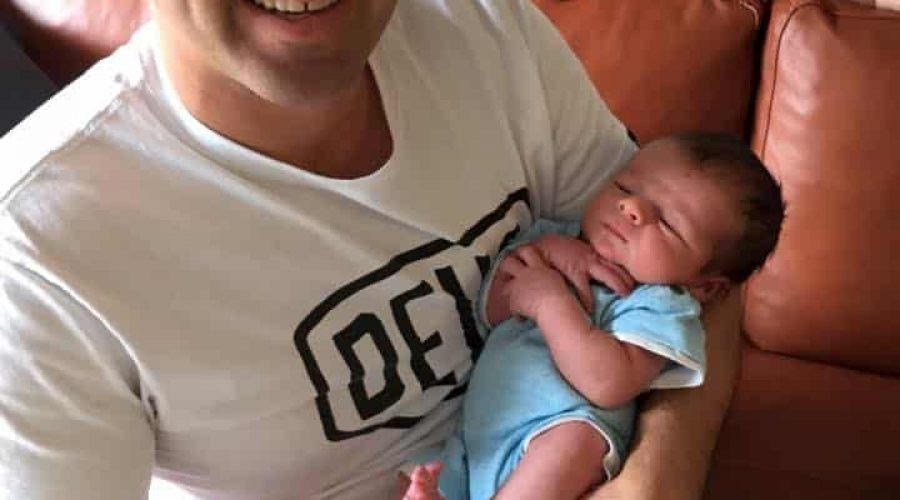Henry’s portfolio is up nearly 9.7 per cent this year and is worth about $20,000. That’s not bad for a first-time 3-year old investor.
Unbeknown to him, his Dad put $1,000 to work the year he was born in a short-change investing app, where 50 cents here-and-there was rounded up to a weekly deposit into a long-term growth investment option.
“The first thing I did was set up a regular investment program and that was through Raiz which is the old Acorns app,” said Henry’s Dad James Marlay, co-founder of LiveWire Markets.
“I invest a certain amount every week on his behalf, so he is dollar cost averaging into a diversified basket of Exchange Traded Funds (ETFs) which gives him Australian shares, global shares and a very tiny little bit of fixed income,” he said,
“Henry is now up over 22 per cent since inception as well as 9.7 per cent for the year.”
Marlay is one of a growing number of Australian parents who are using investment apps on behalf of their kids and who are taking it upon themselves to educate them about being money savvy.
More than half of Australians believe that it should be parents and not teachers, educating children about money, according to a recent survey by Credit Union Australia.
The survey also found that 71 per cent of respondents said they were not taught financial management in school but believe it should be taught in school today.
Nearly three quarters also said that they believe pocket money will provide their children with a good appreciation for money.
While Marlay is financially savvy himself, his choice of Raiz was not because it was the best or the absolute cheapest but because it created a habit around investing and one that he wouldn’t forget.
“When I read information from expert investors they always say start-early,” he said.
“So that is what I will teach Henry, and will educate him on his investments and even so much so that I will even encourage him to save some of his pocket money, and maybe show him a chart on it.”
“I will find ways to get him engaged and interested in it so that doesn’t involve too much finance jargon.
While the Raiz app has been good for Henry starting out, the size of his portfolio means that James is now looking at bigger and more tax efficient opportunities.
“I’ve actually sought out professional advice now on investment bonds, which is a more tax efficient structure given the income currently being earned is being taxed at my marginal tax rate,” Marlay said.
Investing for your kids: how to get started
One of the most common reasons that people delay getting started in the share market is because of the cost. But new apps and online brokers are challenging that school of thought.
That said, there are still pros and cons to using them and it’s important to read the disclosure statements thoroughly first to ensure that you understand what fees and charges may apply.
Raiz: The Raiz app has no minimum investment amount to begin. Once an account is opened, there are no fees on $0 balances. But a monthly fee of $1.25 is charged for accounts with a balance of under $5,000 and 0.275% annually for accounts with a balance of $5,000 and over. Raiz allows investors to choose between 6 types of portfolios which include varying degrees of conservative, balanced, growth investment options.
Stake: By Contrast Stake is a low cost digital broker specialising in the US market and which also has an innovative app available to Australian investors. Stake has a minimum $50 investment to get started but there are no brokerage fees on buy or sell trades on direct shares, unlike your typical CommSec trade of about $20. Stake charges US70 cents for every $100 transfer funds between Australian dollars and US dollars and there are some small regulatory fees applied on share sales. Stake only invests in the US share market, which whilst bigger than the Australian market might be seen as limiting in terms of asset class diversification. That said it provides investors with access to some of the world’s biggest companies such as Facebook and Apple.
By using the Stake platform, one of the lowest cost ways to get diversified US market exposure is through the Vanguard exchange traded fund (ETF) (VOO), which gives investors access to the 500 largest companies in the United States. The management fee on VOO applied by the ETF issuer is only 0.04 per cent, which is very cheap considering that most fund managers will charge up to 1 per cent for asset management.
Investing for your children: 6 things to remember
When considering first-time investing for your children, be it in these options or any other, here are some things to consider:
- The sooner you start, the better.
- Don’t be put off by having a small amount to start with.
- Consider dollar cost averaging as a way to invest regularly.
- Where appropriate make the most of automation and apps to simplify your investments and make finance fun.
- Make a habit of your investing.
- Talk to your children about the investments you are making on their behalf and what they mean for their future.
This Financy article was first provided to Yahoo Finance and has been published here with permission.












